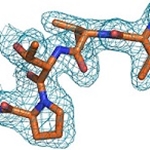7 Tips for Recombinant Protein Expression in E. coli
The ability to express and purify human proteins is essential to scientific research. However, challenges can arise when switching between systems that are not essentially the same. Here are some tips for recombinant protein expression in E. coli:
Codon Optimization
Different organisms often show particular preferences for one of the several codons that encode the same amino acid (codon bias). When expressing a human gene (for example) in E. coli, it is important to consider that the host may have different preferences for certain codons. Keep this in mind when designing your gene construct. The goal here is to increase the translational efficiency of the protein by interchanging codon sequences on the target gene to make it compatible for reading by the tRNAs in the host strain.
TIP #1: A number of charts with codon usage frequency for E. coli can be found by searching Google for “E. coli codon optimization.”
Expression Strain
Screening multiple E. coli strains for expression of your target protein is a step that is often ignored. A seemingly infinite number of strains exist. Some express extra copies of the rare codon tRNAs (e.g., BL21 (DE3) RIL and Rosetta) while others are designed to help with solubility issues (e.g., the ArcticExpress strain expresses cold-adapted chaperones). Expression strains can also be found in either chemically competent or electrocompetent forms, so verify which one works the best for your protein of interest.
TIP #2: E. coli naturally expresses several proteins that have a high affinity for nickel resin (used for 6xHis tag purification). Kerafast’s LOBSTR strains are based on the popular BL21 (DE3) strain, but two of the major contaminants (E. coli ArnA and SlyD) have been engineered to no longer bind to nickel resin. This can help tremendously down the road during affinity purification.
Media, Temperature, and Induction
You can test different media ranging from complex to minimal or defined in small test expression trials to see which yields maximum expression of your protein. The temperature at which you grow the E. coli cells and at which you induce (express your target protein) should be considered. It is fairly common to do a somewhat fast induction (4-6 hours) at 25-37°C. Often times a slower (12-16 hour) induction at a cooler temperature (16°C is frequently used) will increase expression of soluble target protein. Finally, it is important to establish the best concentration of Isopropyl-β-D-1-thiogalactopyranoside (IPTG) or other induction reagent using small test expression trials.
TIP #3: Before inducing, be sure your incubator temperature and that of the cultures have been adjusted to your desired induction temperature. Ice baths and cold rooms can be used to accelerate this cooling. The goal here is to slow cell division once the desired density of cells is reached (e.g., OD600 = 1.0).
TIP #4: Fermenters are often useful for larger-scale E.coli protein expression.
Purification
Affinity purification allows for separation of your target protein from the vast number of E. coli proteins present in the cell lysate. The 6x-His tag is likely the most popular choice for initial purification of recombinant proteins. However, many other fusion tags exist as well, including: GST, Trx, MBP, chitin-binding domain, GFP, and Strep-II. It is also important to point out that affinity tags may disrupt the stability of your protein. It is sometimes helpful to try both N-terminal and C-terminal tags to see which expresses better.
TIP #5: Upon cell lysis, cellular contents are combined, which exposes your target protein to the various proteases, etc. present. Using protease inhibitors such as PMSF and benzamidine can reduce unwanted proteolysis.
TIP #6: The MBP affinity tag can help to stabilize your target protein by acting as a chaperone of sorts and increasing soluble protein expression. MBP binds to amylose resin, which can be used as an initial purification step.
TIP #7: Are you planning to remove your affinity tag? Make sure the protease cleavage recognition site is not also found within your protein sequence.
Still having trouble? Maybe it’s time to look at a different expression system. Many mammalian, insect, and yeast systems exist and have been shown to greatly improve the expression of many difficult proteins.



